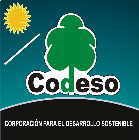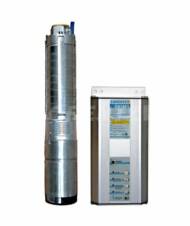Electrification and water projects with photovoltaic solar energy
Isofoton photovoltaic solar panels at the Guayasamin Chapel of Man in Quito, Ecuador
CC
Lorentz water pumps from Germany are powered by solar photovoltaics,
Great performance with low daily costs, heights greater than 200 meters and flows greater than 30,000 liters per hour. Systems for irrigation, for livestock, constant water pressure, etc.
Lorentz photovoltaic solar pumping systems work without a battery bank.
They have an MPPT (Maximum Power Point Tracking) controller, ensuring maximum system efficiency.
The motors of the Lorentz solar pumps are triphasic, guaranteeing high pumping efficiency.
Send us an email with the height of the pumping and the amount of water to be pumped, and we will assist you free of charge with a proposal for the solar pumping system.
Communal solar pumping projects
Overview of communal solar electrification projects
Most of the projects presented here are carried out with economic limitations, providing a basic service to the communities.
Sustainability
The use of solar energy as an energy source is already sustainable, because it protects the environment, but sustainability must also include a low operating cost and the guarantee that the system works in the long term without major costs or dependencies. For this it is important that a certain amount of money is reserved for maintenance and increase of the system. Microenterprises are formed in the communities, which guarantee the service, maintenance and increase of the system, and which charge small monthly fees from the families.
It is our task to train local personnel, who can provide maintenance at the local and regional level. It also wants to involve the different workshops and regional merchants, who approach solar energy. For this, we want to implement a rotating credit system and local training workshops in the future.
In the future, it is planned to increase these systems based on the income collected by the users within their community micro-enterprise for electricity and/or water services. The sustainability of community projects is guaranteed with these fees to finance preventive maintenance by the local technician and the increase in the system due to growth in consumption. The suggested minimum monthly fees for maintenance and replacement are 4 to 5 USD per month and family, but to face future growth in consumption, between 6 and 8 USD must be paid.
In addition, it is expected to be able to win other co-financiers to be able to provide more services to families, for example, having the possibility of opening new marketing lines with frozen products, etc.
General operation
The sun's rays are captured and transformed with solar panels into continuous electrical energy, which accumulates in the battery bank or accumulators.
With the inverter, the direct current is transformed into 110 volt alternating current, which is distributed through the cable network to the houses, where consumers are connected, such as: fluorescent lamps, radio recorders, televisions, blenders, fans, refrigerators, etc. etc.. (see also in the operation section.)
This type of photovoltaic electrical energy system has, like all solar systems, the following important characteristics:
Sustainable, because the energy source is the sun, it does not pollute the environment, nor does it consume fuel, it has a long useful life (panels last more than 25 to 30 years), it can be increased by modules and does not require major maintenance.
Independent and cheap, because it only depends on the sun, a connection to the public electricity network is not needed, nor is it necessary to buy and transport fuel.



